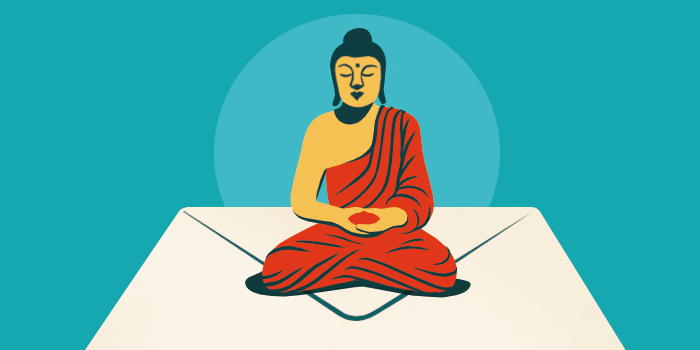Buddhist New Year celebrations

As crowds engage in a water fight for Songkran, the Thai New Year, a girl aims her water gun at young monks. | Paul Brown / Alamy Stock Photo
The New Year is celebrated differently in every Buddhist culture, but to many Buddhists it is a key date on the sacred calendar associated with renewal and purification. Celebrants clean their homes, symbolically sweeping away all that was bad in the departing year and welcoming fresh and auspicious opportunities in the year to come. It is customary at this time to make offerings at monasteries or other sacred religious sites, and to aspire for health, success, and peace.
Buddhist New Year celebrations that follow the lunar calendar take place in winter or spring. A few of the most widely known observances are described below, but you will find other customs across the Buddhist world.
The Tibetan New Year, known as Losar, is a multi-day event in late January, February, or early March, as determined by the Tibetan lunar calendar. An exuberant celebration of Tibetan culture, it includes not only traditional religious rituals such as hanging prayer flags and spinning prayer wheels but also singing, dancing, gift-giving, and cooking special meals. A favorite Losar treat is the khapse, a cookie made in many different shapes, including a lotus blossom. As with many New Year celebrations in Buddhist countries, Losar has pre-Buddhist origins. It is rooted in the Bon religion, which predates Buddhism and now coexists with it.
The Japanese New Year, Shogatsu, is a three-day celebration that is unusual among Buddhist New Year observances in that it begins on January 1: the Japanese calendar was Westernized in the Meiji Restoration of 1868. The first visit of the new year to a Buddhist temple or Shinto shrine is considered particularly important in setting the tone for the year and has a special name, hatsumode. During the holiday, temples ring their bells 108 times—a sacred number in Buddhism, and in this case, it represents the number of afflictions to be removed. Houses are decorated with ornaments, especially around the entryway. The ornaments must be new, not reused from previous years, to symbolize a new beginning. Traditional food for New Year’s includes osechi ryori, a selection of dishes served in ornate bento box-like containers.
Songkran, the traditional Thai New Year, is celebrated in April. It is known as the “water-throwing festival” for the jubilant mass water “fights” in the streets that signify the cleansing of misdeeds and for rituals such as washing Buddha statues. Celebrants visit temples and make merit-earning donations to the monks. In northern Thailand, people carry sand to temples, symbolically releasing the “dirt” of the previous year. Sand stupas, or chedi, are built outside temples and decorated with sacred flags.

Tricycle is more than a magazine
Gain access to the best in sprititual film, our growing collection of e-books, and monthly talks, plus our 25-year archive
Subscribe now